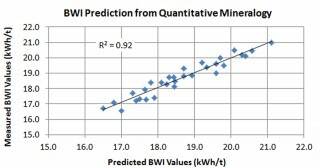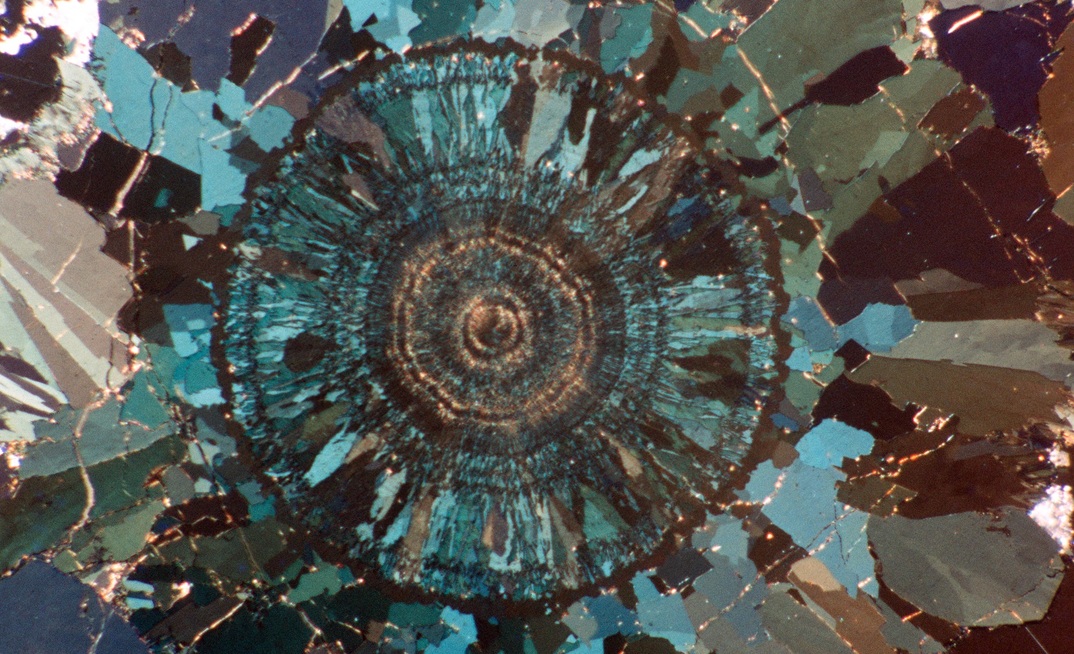As stated in many recent mining papers, the low-hanging fruit is gone and future orebodies will not forgive many metallurgical mistakes. The operating philosophy needs to switch from ‘tonnage farming’ to tight analytical control and forecasting of ore feeds.
X-ray diffraction (XRD) analysis via Rietveld refinement and fourier-transform near-infrared analysis (FT-NIR) will play a significant role in achieving these changes. These analysis systems will constitute critical productivity-optimisation tools – from pit to port.
The highest cost factor in a concentrator operation is grinding. Large efforts in mining companies are now focused on ore-characterisation programmes with mineralogical analyses to determine the variance of the orebody in respect to metallurgy and process mineralogy. In addition, gangue mineralogy represents a substantial process factor for leaching, flotation and metals recovery.
Much of this work is covered under the popular term ‘geo-metallurgy’. That’s where modern mineralogical analysis using quantitative, high-throughput XRD and FT-NIR can make an improvement for ore profiling and reduce risk to ensure an optimised plant operation.
Even minor mineralogical changes in the feed can be a big cost-modifier, with an impact on comminution, pulp chemistry, reagent consumption, froth quality, selectivity, control of penalty element content and other mineral-processing aspects.
Today, quantitative mineralogy has become an integral part of mineral analysis. When these analysis systems are integrated into an automated (robotic) sample-preparation circuit, very high throughputs can be achieved in order to support daily mine production. Understanding the daily interaction of mineralogy, chemistry, metallurgy and plant efficiency are imperative to optimal circuit operation.
The days of just cost-cutting in mining are now bygone. The new 2015 management priority is a laser-like focus on productivity and technically efficient assets. The identification of issues before they materialise as plant trouble is the capability provided by routine XRD and FT-NIR analysis on blastholes, mill and leach feeds, and process products.
Many process and plant inefficiencies are not detected by daily chemical analysis. As a matter of fact, these authors make the challenging statement that some plant problems are the result of an over-reliance on chemistry when mineralogy is required.
Comminution-related analysis
Many conventional comminution tests have some reliability issues related to small changes in rock mineralogy, texture and/or particle size.
Mineralogical data correlated with conventional comminution tests offer two major improvements: control of test data and the capability to perform minerals-related comminution profiles on large, statistically more robust sample populations with rapid and lower-cost lab technology.
The following are some examples of conventional comminution test challenges:
- The SAG Power Index (SPI) approach to semi-autogenous grinding (SAG) mill-performance correlation is less applicable to the determination of SAG mill specific energy for competent ores. It is well known that the SPI has deficiencies (it reports lower values on certain rock types such as volcanic breccias);
- Competent ores may show poor correlations with the data-weight index (DWi) data;
- High specific-gravity and highly abrasive minerals may contribute to higher breakage rates. They vary with the proportion of these minerals in the feed;
- Hard and coarse ores may bottleneck SAG or autogenous (AG) mill throughput, while ball mills might constrain throughput when softer and finer-grained ores are processed; and
- In SAG mills, hard-packing through clay, clay-like slimes and large rock sizes may form concrete-like material between shell lifters. The trend toward larger mills could increase this problem as the higher ball-impact energy could cause more compaction.
An example of a mineral-based correlation with the Bond Work index (BWi) of a copper ore is shown in Figure 1. The prediction of BWi values is based on cumulative mineral concentrations of select gangue minerals which impact the grinding.

Figure 1 - Correlation of Bond Work index and mineralogy
In 2009, a major mining company spent US$90 million on grinding media. Major causes were higher throughput, higher media cost and unpredictable wear peaks due to high ore variance, which could have been minimised via ore blending and/or better routing.
The use of XRD and FT-NIR as forecasting and control tools could have helped to reduce these costs via better ore-feed management. Specifically, improved control of the key hardness and abrasion minerals from blasting, to the reduction of large variances in mill feeds, are critical to cost reduction in grinding.

Table 1 - Cost of an XRD and FT-NIR lab
Table 1 illustrates the overall capital and operating cost scenario for a small XRD and FT-NIR lab with a nominal throughput of +/- 50 samples per day. The expenditures for a combined XRD and FT-NIR mineralogy production support represents +/- 1% of the annual grinding-media cost. Optimisation of the wear cost by +/- 8% through better mineralogical feed control could save the operation +/- US$7 million annually.
Modelling, simulation and advanced controlAs with any modelling and simulation tool, understanding the models and their limitations is critical and there are several
Figure 2 - Mineral alteration zoning for an epithermal gold deposit as established by XRD
usage rules that must be observed to get accurate predictions. Modelling and simulation are reliable and robust, but only if they are based on a larger mineralogical data base. Figure 2 illustrates the use of large-scale XRD and FT-NIR data in modelling the alteration zoning for a gold ore.
|
Analysis for flotation and leaching
The best place to optimise smelting is in the flotation plant, and the best location to improve mineral processing is in the pit. Further, pulp density, froth, mineral selectivity and water chemistry change with ore mineralogy.
Continuous XRD and FT-NIR mineral data can help to control and reduce the cost associated with these parameters by allowing the plant operators to tailor and adjust the circuit to variances in the feed. In particular, the reagent consumption, which in flotation can increase as much as 30% from the data established in lab-test work, can be better controlled. This could have an impact on the unit processing cost by +/- 25%.
In order to achieve optimal and consistent crushing, best-practice agglomeration, good permeability, efficient curing and lowest acid consumption, a copper leach operation will require quantitative mineralogy data.
Many heap-leach operations have already benefited from long-term mineralogical feed and leach residue analysis. The capability to generate spectral models for clays and other alteration minerals via near-infrared or FT-NIR analysers enables mine sites to perform continuous clay and acid consumption analyses. These methods, in concert with XRD, enable a mine to forecast the permeability features of an ore and avoid massive permeability failures.
Conclusions
In summary, daily and quantitative XRD and FT-NIR mineralogy can positively affect plant economics and reduce costs in multiple operational areas:
- Comminution tests supplemented with higher coverage of mineralogical variance can avoid costly design errors and provide statistically better hardness correlations for modelling;
- Mineralogical data improves ore control, blending, or ore routing. It can also improve blast indexing and geotechnical control;
- In the comminution circuit, system overloads and their consequences, unplanned equipment outages, tonnage shortfalls, loss of production and/or catastrophic equipment breakage can be minimised or avoided;
- Rapid prediction of hardness without expensive and slow conventional comminution tests;
- Daily ore mineralogy enables continuous incremental optimisation;
- In the flotation circuit, fast feedback is critical for pulp-density changes, froth stability, reagent control, managing the amount of ‘insoluble matter’ in concentrates, and the pyrite content; and
- In leaching, crusher feed control, curing, agglomeration, acid consumption and permeability can be optimised with routine XRD and FT-NIR analyses.
Ultimately, and most importantly, routine XRD and FT-NIR mineralogy reduces uncertainties, risk and operating costs. The expenditures associated with lengthy de-bottlenecking can be significantly minimised if flow-sheet design is governed by robust and consistent mineralogical analyses.
The mining industry, more than ever, needs to focus on process optimisation and plant efficiency. Mineralogy has the potential to make or break an operation.
Kevin Ausburn is chief mineralogist at FLSmidth’s Ore Characterization & Process Mineralogy Labs, and Wolfgang Baum is director of process mineralogy and plant optimisation across FLSmidth’s Minerals Process Technology group. See www.flsmidth.com

























